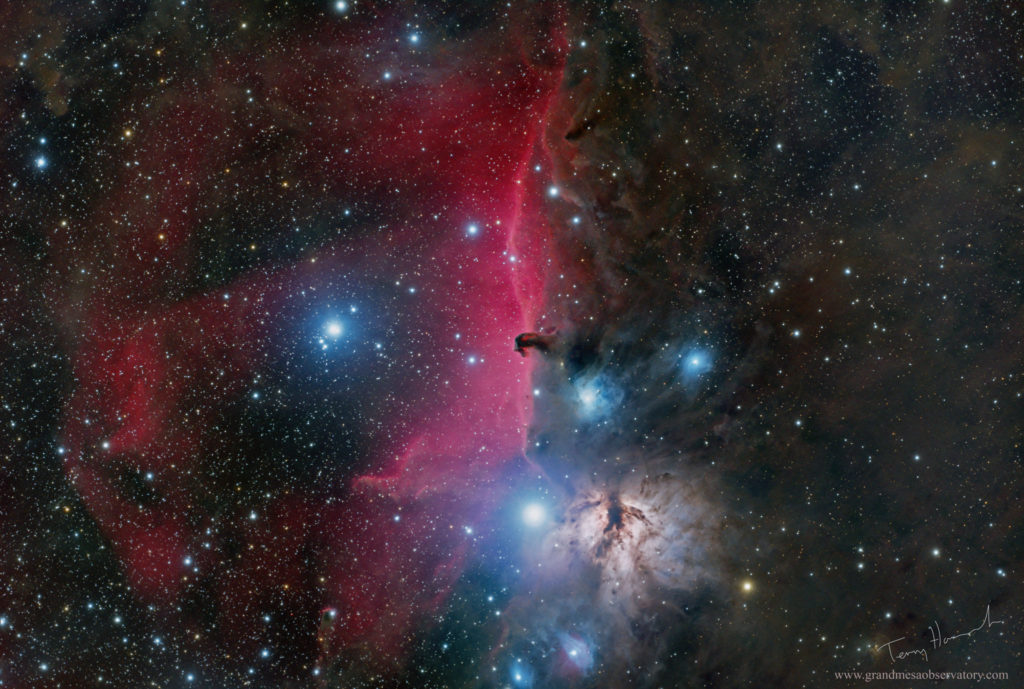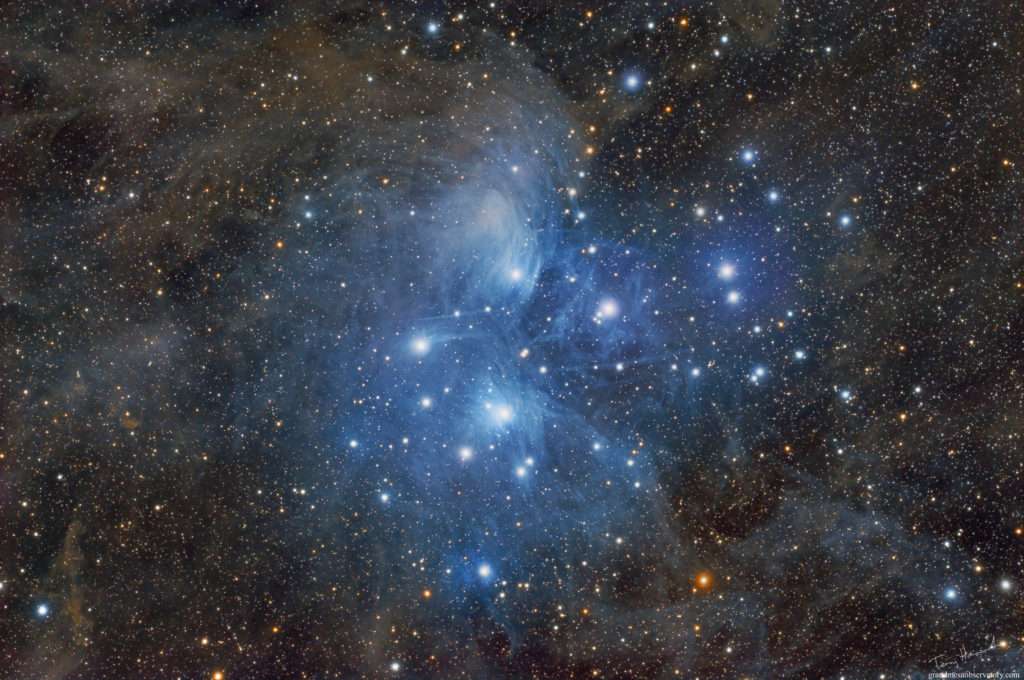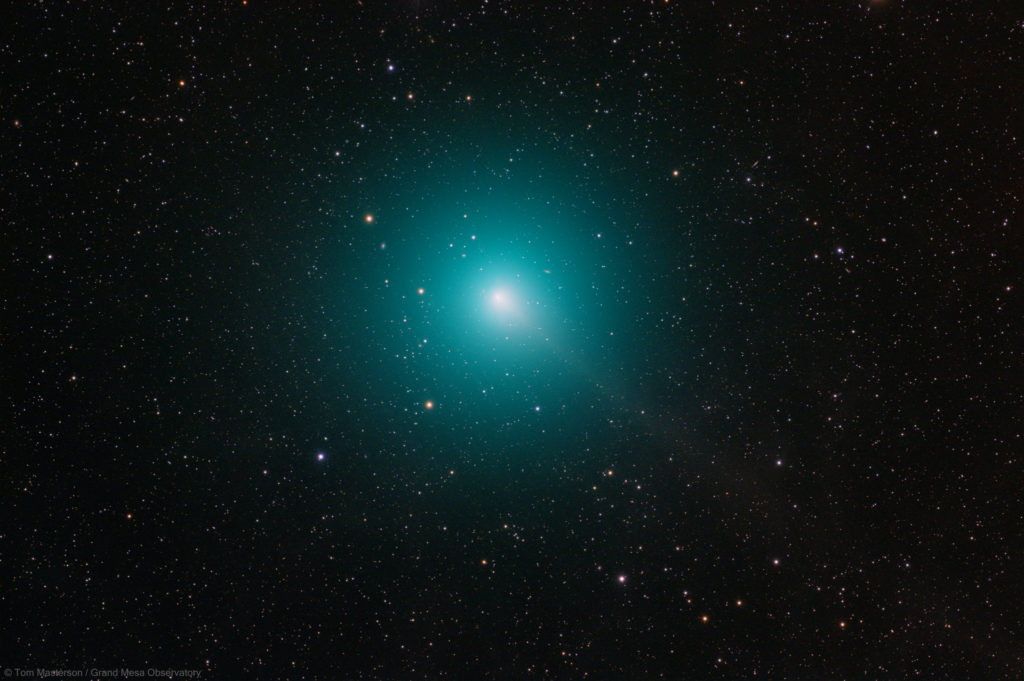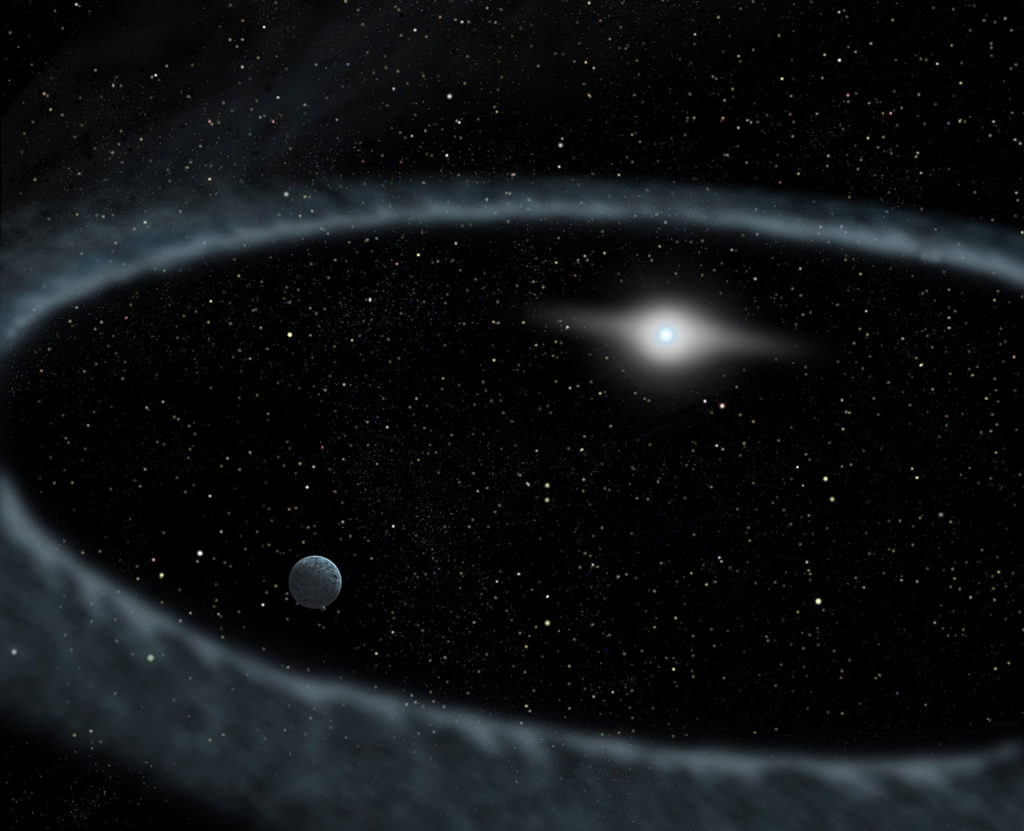
Perhaps the finest multiple star in the sky visible to both northern and southern observers, Sigma Orionis is a gravitationally-bound system of five stars, four of which are visible upon careful inspection with a small telescope. The brightest star of this group is one of the most luminous known, and it lights up the gas and dust around the famous Horsehead Nebula near Orion’s Belt. The star will one day expire, like many stars in Orion, in a spectacular supernova explosion.
Sigma Orionis doesn’t have an easy-to-remember name, but it’s not hard to find. It’s just south of Alnitak, the easternmost star in Orion’s Belt. The total visual magnitude is 3.6, so it’s visible even in light-polluted city skies [Read more…] about A Quintuple Star in the Constellation Orion
Share This:

